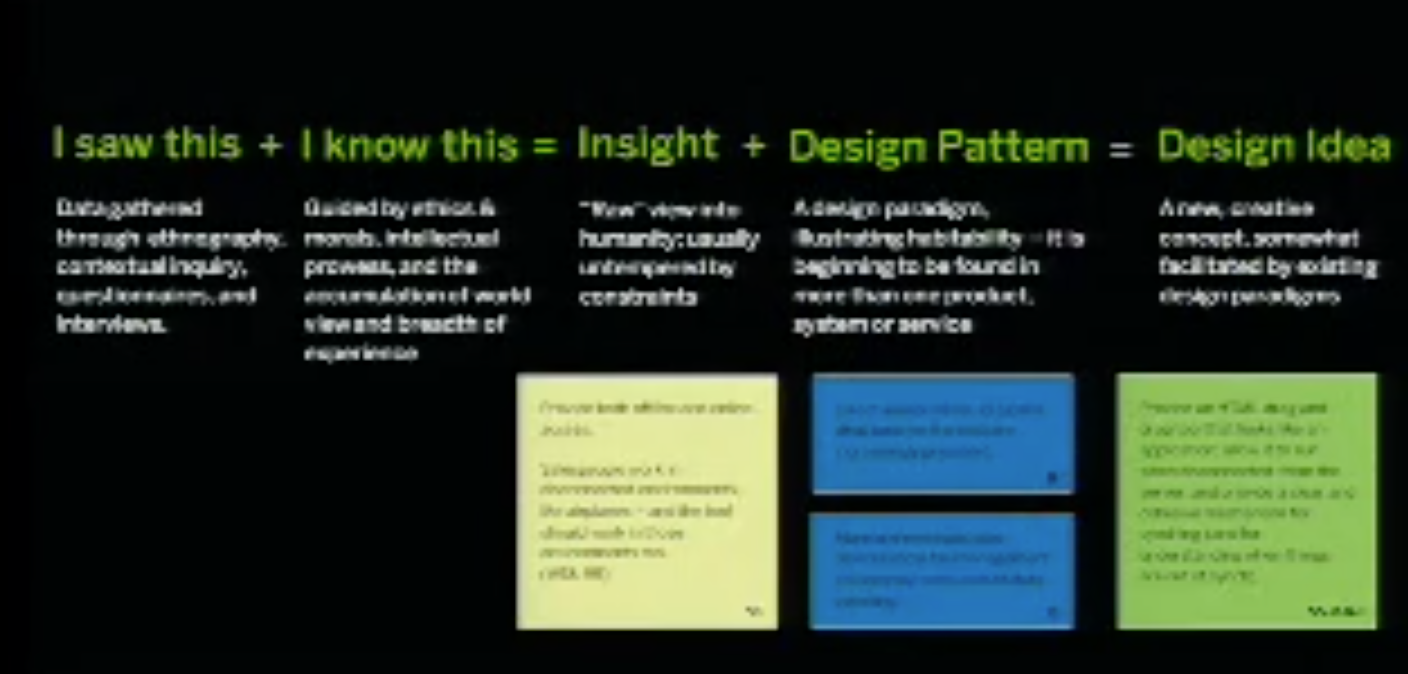https://www.ideo.com/journal/the-best-business-breakthroughs-come-from-moments-of-doubt
Category: design synthesis
Design synthesis
What use are methods without theory?
“We’re not having a discussion about what happens in between (the research and the artefacts)”.
Methods that live in the synthesis section.
“Design synthesis is an abductive sensemaking process of manipulating, organizing, pruning and filtering data in an effort to produce information and knowledge.”
Charles Pierce
Deduction
A is B.
B is C.
A is deductively C.
This is the logic that all of us learn.
Inductive
All squirrels are grey.
The next squirrel I see will be grey
This argument remains true until I see a squirrel that isn’t grey (then the argument falls apart).
Abductive
When I do A, B occurs.
I’ve done something like A before but the circumstances weren’t exactly the same.
I’ve seen something like B before, but the circumstances weren’t exactly the same.
I’m able to abduct that C is the reason that B is occurring.
This is the logic of design, but it’s not the same logic we learnt at school. This is a sensemaking process.
Design synthesis methods
Insight combination and reframing
I saw this + I know this = insight
“A raw view into humanity”.
Free of budget and resource at this stage.
Take this and combine it with a design pattern.
When you combine these two things you get a design idea.
You can also keep IDs next to the notes.
You can trace any idea back to its source.
“Then you can keep it all on a spreadsheet” 🙂
Reframe “What if”
Frame is a point of view based on all of the things that have happened to you in the past.
For example, a house fire is viewed differently depending on if you are the owner or the insurer.
Consider a toothbrush.
Think about a toothbrush from a number of different perspectives.
Environment – in a bathroom
Perspective
Embodiment
Now you can reframe based on any of these. For example,
Environment – what does a toothbrush look like if it’s made for the kitchen? Or for a conference?
Perspective – consider it from the dentist’s point of view, not the consumer. Consider it from the housekeeper’s point of view, who has to clean, move and touch someone else’s toothbrush.
Every time we reframe we change the user goal.
Embodiment – consider if a toothbrush is a plant. What if it’s a service? What if it’s a spray?
To do this, you need to get ok with abductive logic.
Create a matrix.
Now go through and work your idea.
Now fill in the result. What does that mean for the design form?
